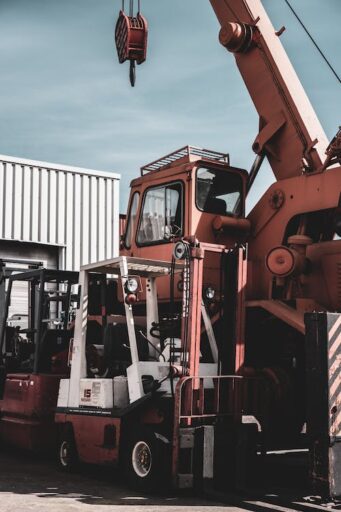In the dynamic world of material handling and logistics, businesses constantly seek innovative solutions to streamline operations and boost productivity. One such pivotal equipment in this realm is the reachstacker – a powerful and versatile machine designed to handle heavy and oversized cargo with ease. In this article, we’ll explore the significance of reachstackers, their key features, and the advantages they offer to various industries and businesses.
Understanding Reachstackers
A reachstacker is a specialized type of forklift commonly used in container handling and intermodal logistics. What sets reachstackers apart is their ability to lift and transport containers with efficiency and precision. These machines are equipped with a telescopic boom, enabling them to reach containers stacked in rows, making them particularly useful in container yards, ports, and distribution centers.
Key Features of Reachstackers
Telescopic Boom: The telescopic boom allows reachstackers to lift containers from ground level and place them precisely on top of one another. This feature is essential for optimizing storage space in container yards and warehouses.
Container Spreader: Reachstackers are equipped with a specialized attachment known as a container spreader. This device securely grips the corners of the container, ensuring a stable lift and transport operation.
High Lifting Capacity: Reachstackers are designed to handle heavy loads, with lifting capacities ranging from 30 to 65 tons or even more. This capability makes them suitable for handling a variety of cargo, including oversized and overweight containers.
Maneuverability: Despite their size and lifting capacity, reachstackers are surprisingly maneuverable. They can navigate through tight spaces in container yards, allowing for efficient container stacking and retrieval.
Adaptability: Reachstackers are versatile machines that can handle not only containers but also other types of cargo, such as steel coils, lumber, and heavy machinery. This adaptability makes them valuable in diverse industrial applications.
Advantages for Businesses with Reachstackers
Increased Productivity: The primary advantage of using reachstackers is the significant increase in productivity. Their ability to handle containers efficiently and quickly reduces turnaround times in ports and container yards. This results in faster loading and unloading of vessels, ultimately improving supply chain efficiency.
Optimized Storage:
Reachstackers contribute to optimized storage space in container yards and warehouses. Their telescopic booms enable precise container placement, maximizing the use of available space and reducing the need for additional storage areas.
Cost Efficiency:
Investing in reachstackers, especially in the used equipment market, can lead to cost savings for businesses. The lower initial cost of purchasing a used reachstacker compared to a new one allows companies to allocate resources to other critical aspects of their operations.
Versatility in Cargo Handling:
Beyond containers, reachstackers offer versatility in handling various types of cargo. This flexibility makes them valuable assets for businesses involved in diverse industries, including shipping, manufacturing, and construction.
Reduced Labor Requirements:
The efficiency of reachstackers translates to a reduction in labor requirements for material handling operations. Businesses can optimize manpower, assign personnel to more strategic roles, and potentially lower labor costs.
Enhanced Safety:
Reachstackers are equipped with advanced safety features, including load monitoring systems and anti-collision technology. These features contribute to a safer working environment, reducing the risk of accidents and injuries during material handling operations.
Adaptability to Changing Demands:
As businesses evolve, so do their material handling needs. Reachstackers, with their adaptability to various types of cargo, allow companies to respond effectively to changing demands in the market. This adaptability is particularly valuable in industries with fluctuating cargo types and volumes.
Environmental Considerations:
Some reachstackers are designed with environmental considerations in mind. Features such as energy-efficient engines and emission reduction technologies contribute to a greener operation, aligning with sustainability goals that many modern businesses strive to achieve.
Applications Across Industries with Reachstackers:
Maritime Industry:
Reachstackers play a crucial role in container terminals and ports, where they efficiently load and unload containers from ships. This accelerates port operations and contributes to the overall efficiency of global maritime trade.
Logistics and Distribution Centers:
Inland logistics and distribution centers benefit from reachstackers by optimizing the storage of containers and facilitating the swift movement of cargo within warehouses. This is particularly important in e-commerce and supply chain industries.
Construction Sector:
Reachstackers are employed in the construction industry to handle heavy materials such as steel beams, pipes, and machinery. Their adaptability to different types of cargo makes them valuable assets on construction sites.
Manufacturing Facilities:
Manufacturing plants utilize reachstackers for the movement and storage of raw materials and finished products. The machines’ lifting capacity and versatility contribute to streamlined manufacturing processes.
Intermodal Transportation:
Reachstackers are instrumental in intermodal transportation, where containers need to be efficiently transferred between different modes of transport, such as ships, trucks, and trains. This contributes to the seamless movement of goods across the supply chain.
Conclusion Reachstackers:
Reachstackers emerge as indispensable assets for businesses operating in industries that involve the handling of heavy and oversized cargo. Their efficiency, versatility, and adaptability to various applications make them key players in optimizing material handling operations. From reducing labor requirements to enhancing safety and contributing to environmental sustainability, the advantages of reachstackers extend far beyond their immediate functionality. As businesses continue to seek ways to enhance their operational efficiency, the role of reachstackers in the modern industrial landscape is set to become even more prominent.





